Rugby Ball Buyer Guide
Are you a rugby coach or player looking for the perfect ball to help your senior, youth or women’s rugby team? You’ve come to the right place. This page will discuss World Rugby’s laws relating to ball size and shape and provide helpful tips on finding the best ball for your rugby needs.
No matter your experience level or age, investing in a quality ball can help improve your overall pitch performance and enjoyment.
The History of the Rugby Ball
The first rugby ball, in 1820, was made in leather by leather shoe makers Richard Lindon and William Gilbert from Rugby in England, using a pig’s bladder encased in four hand-stitched panels of leather. The blown-up pig’s bladder gave the rugby ball its unique oval shape.
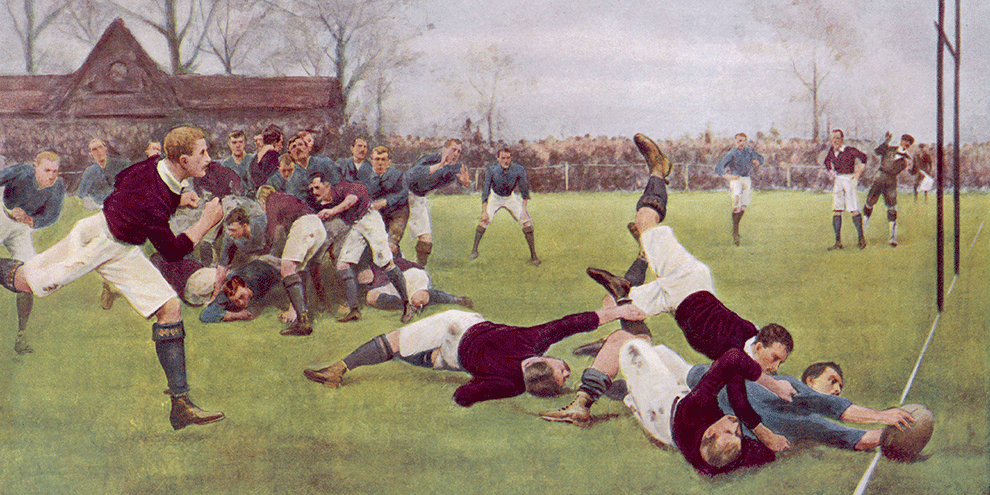
Rugby ball size and shape
Before you buy a ball for playing rugby, we suggest you review the latest guidelines from World Rugby on the size, shape and recommended air pressure of the ball.
Regarding the size of a rugby ball, World Rugby has established specific guidelines based on age and level of competition. According to their rules, size five balls are the official ball used by men’s and women’s teams. Junior and youth rugby should use smaller balls, such as size three and four.
The most common dimensions are:
- Size 5 (adult): Length – 280mm to 300mm, Circumference – 740mm to 750mm, Girth – 580mm to 620mm (see image below), recommended for Under 15 and up grades.
- Size 4 (junior): Length – 275mm, Circumference – 720mm, Girth – 555mm, recommended for Under 10, U11, U12, U13, and U14 grades.
- Size 3 (mini): Length – 255mm, Circumference – 680mm, Girth – 540mm, recommended for Under 7, U8, and U9 grades.
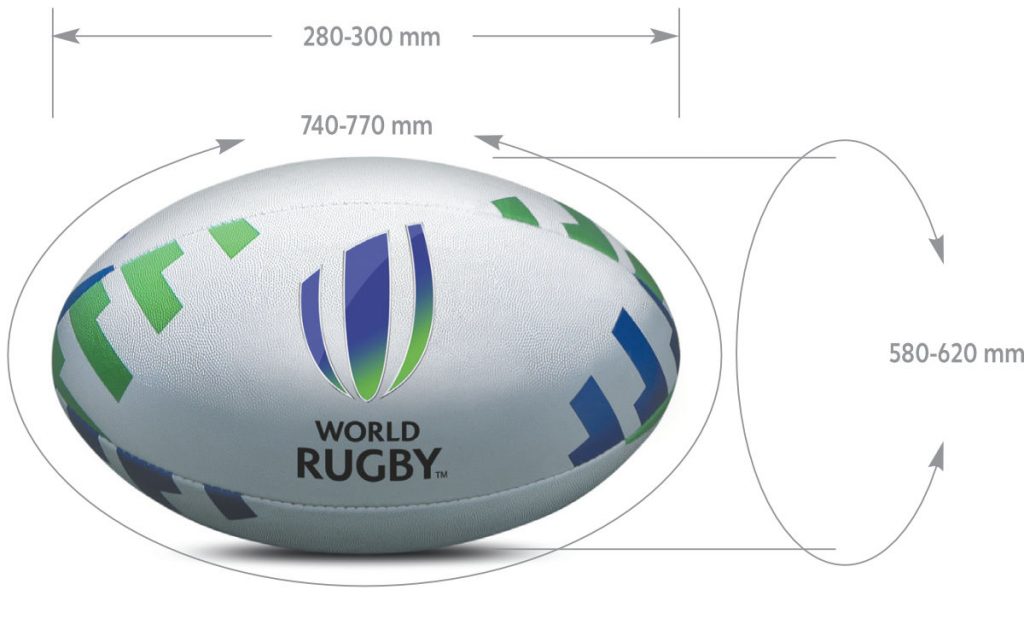
When the game starts, the air pressure guidelines for a size five ball are 65.71-68.75 kilopascals, 0.67-0.70 kilograms per square centimetre, or 9.5-10.0 pounds per square inch.
Tips when buying a rugby ball
Junior, youth and senior balls
Having the proper ball is essential when playing or training in rugby union. Players and coaches should consider factors such as the playing conditions and skill level when buying a rugby ball.
As mentioned, rugby balls come in a range of sizes, weights and designs, and each type has its own unique set of characteristics tailored to different skill levels.
For instance, junior and youth players use lighter and softer balls that are easier to control and handle, while senior players often opt for heavier and harder balls.
Playing conditions, materials and surface
Soft compound balls are ideal for wet or muddy fields and windy conditions, while harder compounds are best suited for dry conditions.
The playing surface, for example, grass versus artificial turf, directly influences the best ball type. A harder, lighter ball is best for artificial turf.
Beyond size and weight, factors such as the materials used to construct a rugby ball can affect the quality, durability, grip and overall performance. This is why in the 1980s, traditional leather balls, prone to water-logging, were replaced with synthetic waterproof balls manufactured from materials such as rubber, latex or neoprene.
Higher-end rugby balls sometimes use unique compounds to perform better in wet conditions than non-treated balls.
Ultimately, each material has pros and cons when it comes to playing rugby union, so it’s essential to research before making a purchase.
Rugby ball design
In addition to size and materials, the design of a rugby ball can also affect its performance.
For example, some balls have a larger circumference for better passing accuracy. In contrast, others have an aerodynamic shape which allows them to travel further distances in the air.
Rugby balls come in various colours and patterns, so you can add a personal style when picking out your gear. For example, Gilbert produces a range of replica training balls that you can personalise with:
- your favourite country (e.g. Wales, Scotland or England)
- a club badge
- customised colours
Rugby Union Vs Rugby League balls
It’s important to note that there is a difference between rugby union and other types of rugby balls.
The primary difference between a rugby union and different types of rugby balls lies in their size. A traditional union ball is typically oval-shaped and larger than other rugby balls, measuring between 28 and 30 centimetres in length and 58 to 60 centimetres in Circumference.
Professional-level union balls also feature a four-panel design with hand-stitched reinforced seams for extra durability. Other rugby ball designs, such as those used for league matches, usually have an eight-panel construction and feature improved grip technology.
The rugby rebound or half-ball
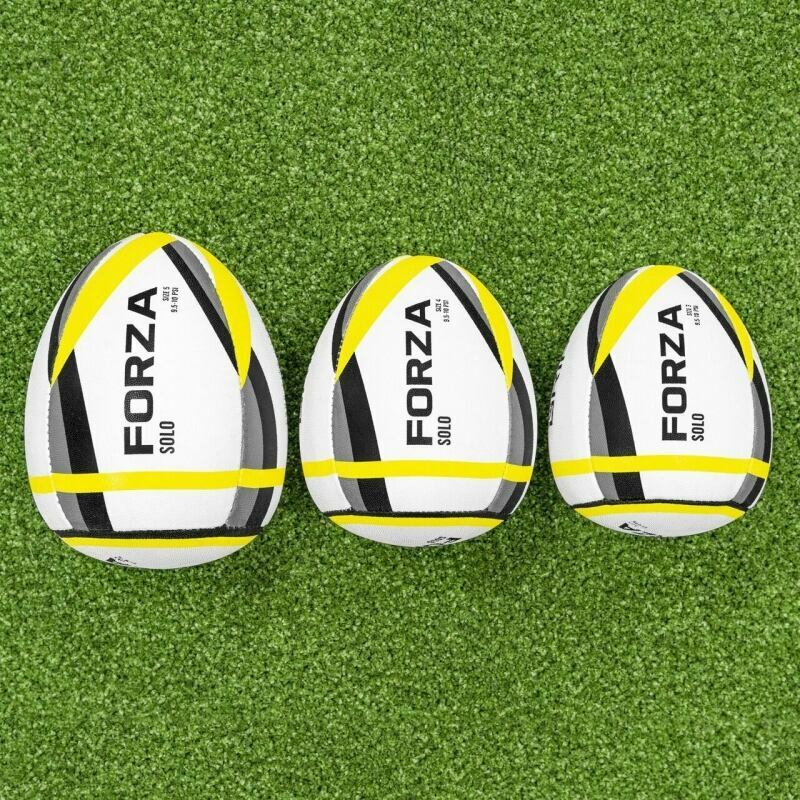
Are you looking for a way to step up your rugby training and hone your passing skills? Look no further than the rugby rebound or half-ball. This innovative yet simple training tool provides an easy way to practice and perfect your rugby passes. You can get the most out of your individual training sessions with the rugby rebound ball!
The rugby rebound ball is designed for individual passing practice.
It features a half-moon shape with two handles on either side, allowing you to pass the ball back and forth without chasing it down. The handles also make it easy to grip the ball and make passes with greater accuracy and distance. The rebound ball also helps improve your catching skills as it bounces back from any surface, making it easier to catch.
In addition to improving your passing and catching skills, the rugby rebound ball is also great for developing agility, hand-eye coordination, and timing. The unpredictability of the ball’s bounce helps you learn to move quickly and adjust quickly to the ball’s direction. This makes the rebound ball an excellent tool for honing your rugby-specific skills and providing a fun, effective way to practice your passing.
A rugby rebound ball is an excellent tool for individual rugby training. It helps hone your passing and catching skills and improves agility and timing. Whether you’re a beginner or an experienced player, the rebound ball can help take your game to the next level!
Training or match balls
The pimpled grip on the rugby ball
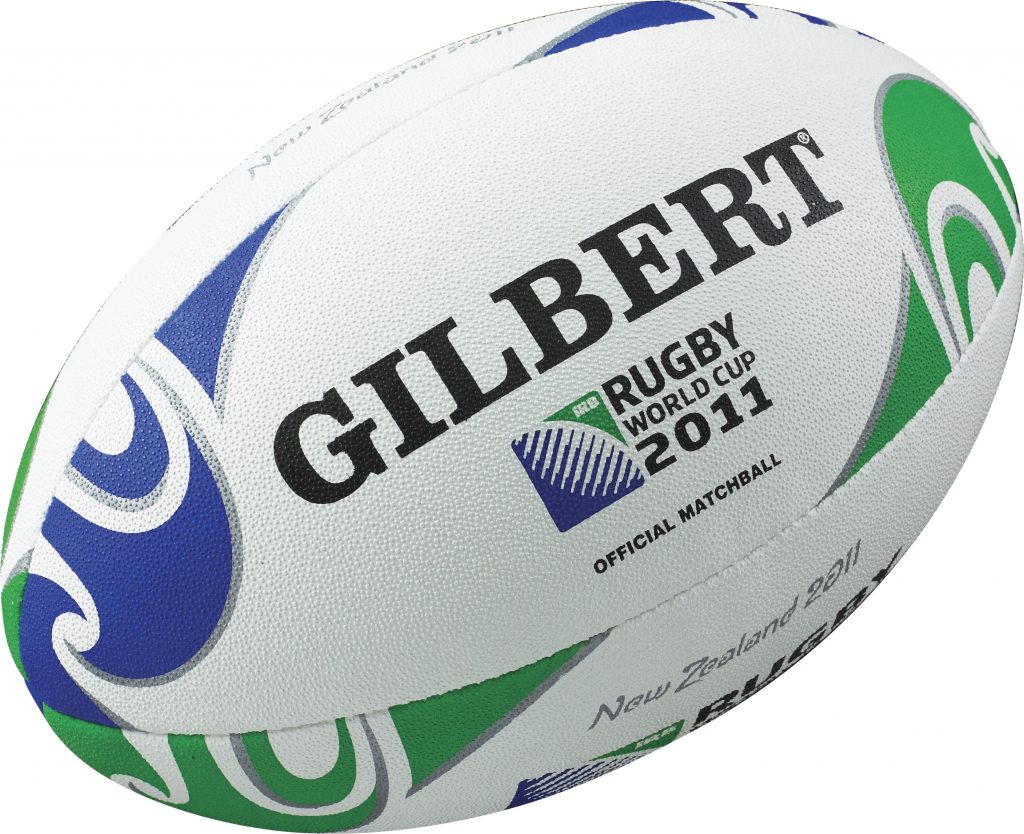
Rugby balls now have a unique feature that affects how players perform on the pitch—the pimpled grip. These pimpled bumps, created by a rounder-topped pimple pattern, are designed to increase your grip on the ball when passing and off the foot when kicking.
The higher the number of pimples on the ball, the better your grip, which can differ between nailing that long pass, finding a long touch or missing it altogether.
But what exactly are those little bumps, and how do they affect your performance?
The pimples on a rugby ball are much more than just a unique design. These small ‘pimpled’ bumps offer crucial grip benefits that can mean the difference between success and failure on the pitch.
For example, some balls feature a textured, high-pimple pattern that offers the player improved grip and control in wetter conditions. On the other hand, some balls tend to have rounder, shallower pimples that are better for drier conditions and artifical surfaces.
Training balls typically have a higher natural rubber ratio than match balls and may not perform as well in wet weather.
The composition of materials on the ball can impact its performance and grip.
Generally, a higher percentage of natural rubber on the ball provides more grip, whereas synthetic rubber offers greater longevity. As such, match balls tend to have a higher ratio of natural rubber to synthetic rubber, whereas training balls have more synthetic rubber as they need to last longer, though they may be less grippy when wet. Natural rubber also has more cushioning than synthetic materials, so higher levels of natural rubber make for softer handling and greater control over passing accuracy.
On match balls specifically, manufacturers strive for an optimal balance between weight and firmness to ensure that kicks and passes travel further yet remain accurate in windy conditions.
The bladder of the rugby ball
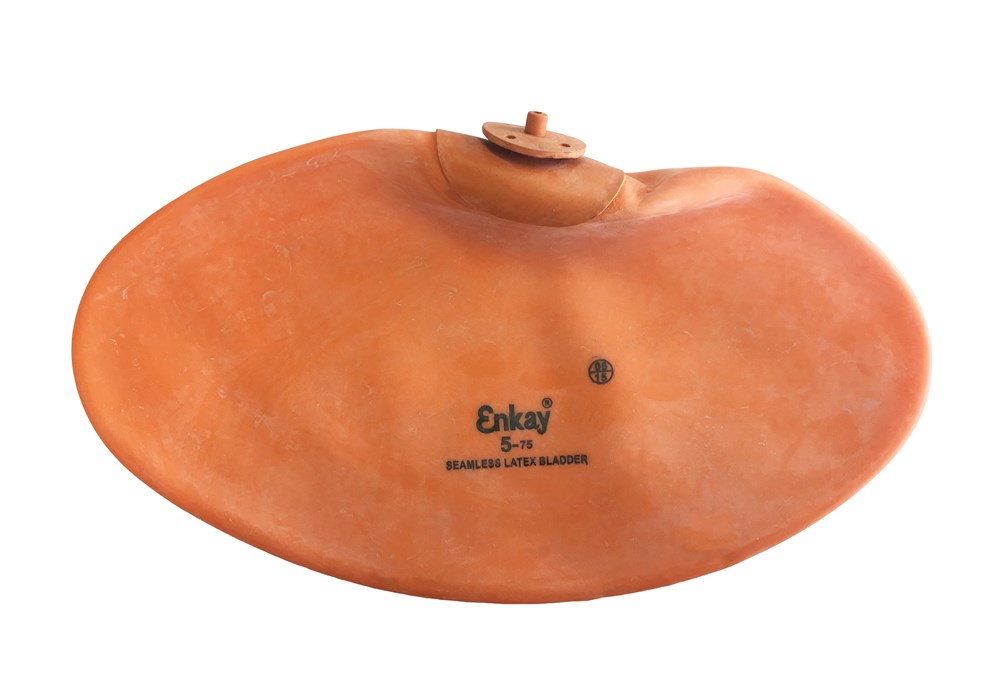
When choosing a rugby ball, the bladder is an essential factor. The rugby ball bladder plays a critical role in the overall shape and performance of the ball. A well-made bladder ensures the ball is evenly balanced and maintains its shape. This makes it easier for players to pass, catch or kick accurately.
The natural latex bladder is the most common type used in rugby balls. It provides excellent air retention and bounce for accurate passing and kicking accuracy. This material is also very durable and can be used repeatedly with minimal wear and tear.
The co-polymer bladders are an excellent alternative for those who want a more durable bladder. The co-polymer bladder provides air retention and bounce similar to balls using a natural latex bladder but is much more resistant to deterioration. This makes it ideal for use in training sessions or for playing in harsher conditions.
Ultimately, the pimpled grip of a rugby ball is designed to give players better control over their performance on the field. By understanding how different surfaces and materials affect grippiness and accuracy, players can choose a ball that matches their needs and playing style.
The valve of the rugby ball
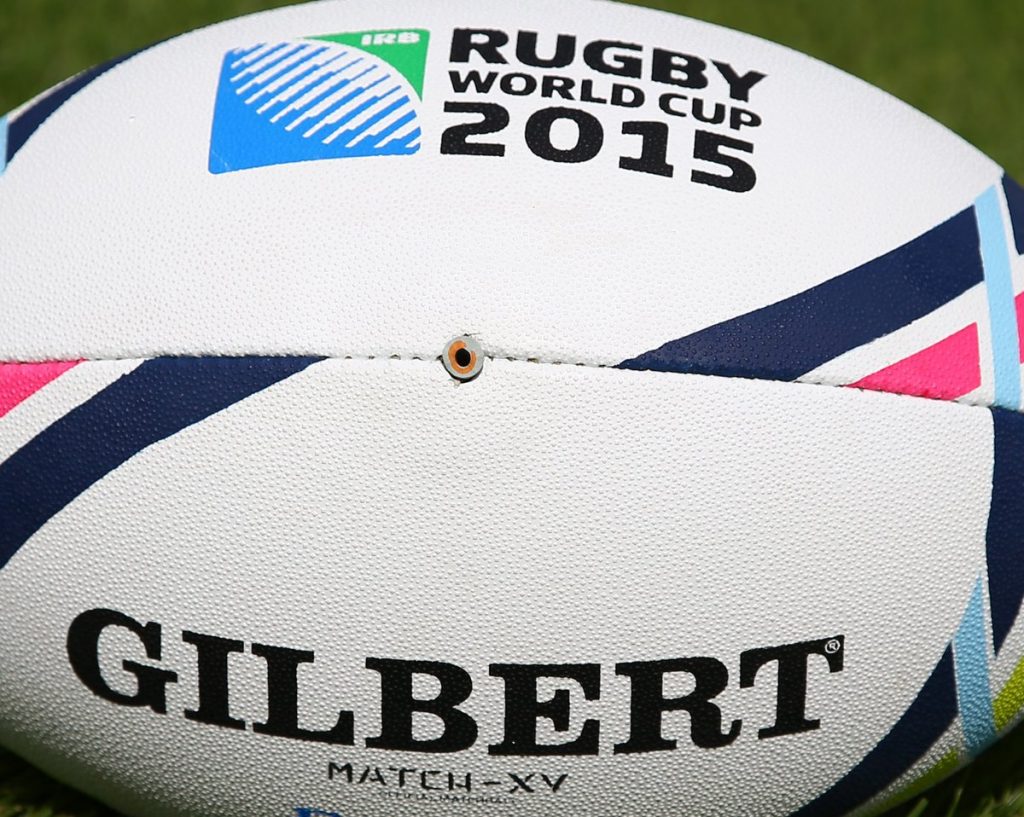
The valve on a rugby ball is a small but essential part that plays a critical role in how it behaves when kicked and thrown.
The Valve: The valve is a small plastic or metal tube installed at the end of the ball for two primary purposes.
Firstly, it allows air to be pumped into the ball when it needs to be inflated, ensuring that it is nice and round. Secondly, it acts as a weight, counterbalancing the seam of the ball which runs around it. This allows the ball to travel further and more accurately when kicked.
Match Ball vs Training Ball: There is a big difference between match balls and training balls regarding the valve. Match balls have a much higher quality valve designed not to leak air so that your match ball stays inflated for much longer than a training ball.
As well as this, match balls often have a tighter valve allowing them to be more accurately kicked, as they maintain their shape better than a training ball would.
